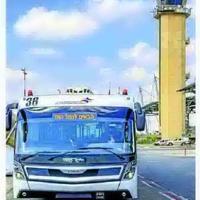Chances are your summer trip will include going through at least two airports — maybe more. And in the real world, you’d have a hard time finding an environment as hostile as a big airport. Fortunately, you can ease some of the worst hostilities with a little planning and maybe a little more funding.
If you plan to park your car at your home airport for the duration of your trip, consider an independent airport parking facility. They’re often cheaper than long-term parking at the airport’s lots, and they generally offer smoother transport to and from the terminal. Check Airport Parking Reservations (airportparkingreservations.com) or The Parking Spot (theparkingspot.com) to see what’s available at your departure airport.
Airline-sponsored curbside baggage check can usually avoid a schlep to the check-in counter and a line when you get there. In many cases, you can also take care of other check-in business there. You may have to pay a fee.
People are also reading…
You can avoid paying stiff baggage-check fees on the co-branding airline if you have the right credit card from Alaska, American, Delta, JetBlue or United. These cards carry annual fees of $95 to $150, which a few trips will recover in fees.
Most airlines allow you to check in online or through an app and avoid lines at a counter.
If possible, get a nonstop flight, even if it costs a few bucks more. Almost all big connecting hubs are hostile, so the easiest way to cope is to fly over them at 39,000 feet.
Unless you’re on a premium-class ticket, lounge access isn’t free; typically annual programs cost $400 or more. But that fee includes access to comfortable seating with good Wi-Fi, attractive meal/snack spreads and as much as you want to drink. The pricing is aimed at road warriors rather than occasional travelers, but if you’re serious about an annual program, consider one of the several premium credit cards that include a lounge program as a benefit, notably AmEx Platinum ($695 per year) Chase Sapphire Preferred ($550 per year), which offer the widest range of lounge options. Occasional travelers should check Lounge Buddy (loungebuddy.com) for single-use passes to a lounge at any airport; prices start at $25 and may include guests. But warning: Lounge access has become so popular that many lounges are overloaded — lines waiting to get in are common.
Airport security puts you through two different choke points.
■ Clear, a private operation, gets you past the first choke point: screening your boarding pass and ID to get into the actual screening area. This is usually the worst security line. Clear is available at 58 large U.S. airports (along with some other venues) and makes sense mainly to travelers who usually start their trips at one of those airports. It costs $189 per year, with up to three additional family members at $99 a year. An extensive enrollment process verifies your identity. Check Clear (clearme.com) for details.
■ Pre-Check, run by the Transportation Security Administration, puts you in what is usually a fast lane through security once you’re past the entry choke point. Enrollment costs $85 for five years and requires a personal verification interview. Pre-Check works through airlines: Once you have a “trusted traveler” number, you submit it to each airline you fly, and when you actually take a trip, a Pre-Check entry OK is printed on your boarding pass.
If you travel outside the U.S., you may want to enroll in Global Entry, a program that allows you to bypass what are often extremely long lines at incoming customs and immigration stations. It costs $100 per year; it also requires an enrollment interview and a trusted traveler number. If you get Global Entry, you also automatically get Precheck. Check cbp.gov/travel/ trusted-traveler-programs/ global-entry for details.
As with lounges, the two best ways to ease the hassle of security screening are priced to be more attractive to road warriors than to occasional travelers. But several premium cards credit charges for Global Entry or Pre-Check and Clear, and several cards credit part of the cost.
Email Ed Perkins at eperkins@mind.net. Also, check out Ed’s new rail travel website at www.rail-guru.com.





